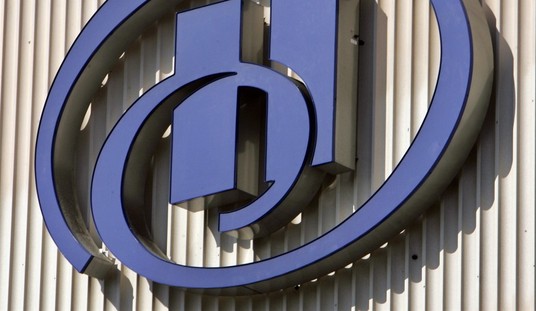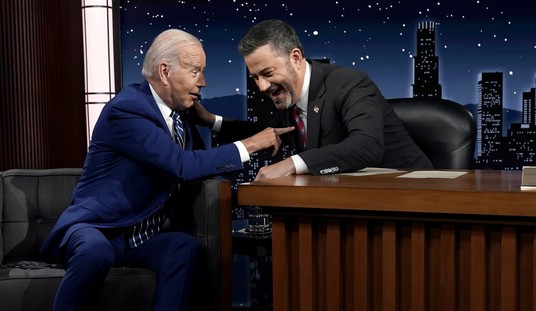Until now, the answer usually given by economists to those asking whether the US has entered a recession has been to point to the jobs market. Jobs growth has remained robust as the economy recovers jobs lost in the pandemic shutdown; even last month’s jobs report was barely off the 400K jobs/month average of the past year. Unemployment claims remained low, economists pointed out, and the US was about to reach its nominal level of pre-pandemic employment in the next couple of months.
Suddenly, however, the jobs market doesn’t look so good, reports the Washington Post. Layoffs are up, hiring appears to be slowing, and the best that can be said is that the anti-inflationary policies of the Federal Reserve may be working:
The labor market, until now a pillar of economic resilience, is showing cracks.
Job growth is slowing, unemployment claims are ticking up and several big companies, including Apple and Meta, are putting hiring plans on hold. There are signs that more firms are slashing jobs in industries as varied as tech, advertising, health care, finance and law.
Convenience store chain 7-Eleven laid off 880 corporate workers in Texas and Ohio, following its purchase of a rival chain, a company spokesperson said an email. Ford Motor Co. is planning to cut 8,000 positions in the coming weeks, Bloomberg reported. Meanwhile, electric carmaker Rivian is cutting 700 positions, delivery start-up Gopuff is laying off 1,500, and mortgage lender LoanDepot is slashing 4,800 jobs this year, according to reports.
“What had been universally positive labor market news is certainly less so now,” said Liz Ann Sonders, managing director and chief investment strategist at Charles Schwab. “The anecdotes are starting to stack up of companies laying off workers or freezing hiring or limiting job postings.”
It’s not just anecdotal either. The Department of Labor reported yesterday that initial weekly jobless claims have begun ticking upward since April, and this week hit their highest level since December:
In the week ending July 16, the advance figure for seasonally adjusted from the previous week’s unrevised level of 244,000. The 4initial claims was 251,000, an increase of 7,000 week moving average was 240,500, an increase of 4,500 from the previous week’ s revised average. The previous week’s average was revised up by 250 from 235,750 to 236,000.
The advance seasonally adjusted insured unemployment rate 0.1 percentage point from the previous week’ was 1.0 percent for the week ending July 9, an increase of s unrevised rate. The advance number for seasonally adjusted unemployment insured during the week ending July 9 was 1,384,000, an increase of 51,000 from the previous week’s revised level. The previous week’s level was revised up 2,000 from 1,331,000 to 1, 333,000. The 4week moving average was 1,353,250, an increase of 13,250 from the previous week’s revised average. The previous week’s average was revised up by 500 from 1,339,500 to 1,340,000.
This is still a fairly mild level of claims, but the trendlines are now pointing in the wrong direction. Add that to the layoffs and hiring cancelations, and one gets a picture of a jobs market about to stall out, or at least slow down considerably — and well before we get to a full healing from the pandemic. I continually remind people that employment is dynamic rather than static, and we’re a lot further from complete recovery than people think:
For those keeping track, the new number of total jobs filled is now 151.98 million. That puts the US a little over a half-million jobs shy of the February 2020 figure of 152.504 million jobs filled, the last full month before the pandemic shutdowns destroyed 22 million jobs in April and May of the same year.
It means we have recovered 98% of the jobs lost since March 2020, but that is a static measurement. Population growth in the US — between 2 and 2.5 million per year — requires constant job growth to keep up the employment-population ratios and maintain a healthy economy. Even at a minimal population-growth assumption of 4 million over 28 months, we need an additional 2.4 million jobs to keep pace with the February 2020 dynamic status quo, so we are now about 2.9 million jobs shy of full recovery from the pandemic. …
Update: According to these figures, the US has added 3.8 million people over the last two years. At a 59% employment-population ratio, we needed to add 2,243,545 jobs in that period just to keep pace. That’s on top of the necessary job recovery to get us back to the nominal status quo ante jobs level in February 2020. That means we are still 2.7 million jobs shy of full recovery.
With the Federal Reserve trying to tame inflation — on its own, as the Biden administration refuses to change the energy policy fueling inflation, so to speak — it’s beginning to look like we will fall short of full recovery. And unfortunately, that will be on purpose:
The cooling of the hot labor market is, in many ways, exactly what policymakers have been trying to engineer. Next week, the Federal Reserve is expected to raise interest rates for the fourth time this year in hopes of slowing the economy enough to control inflation without leading to widespread job losses or recession. The Fed expects the unemployment rate to gradually rise from a near 50-year low of 3.6 percent to 4.1 percent by 2024 — with the hope that most of the slowdown comes in the form of fewer job postings and hirings instead of job cuts and layoffs.
But achieving that balance can be tough. Labor economists say they’re increasingly worried that the picture could quickly sour.
“Things have slowed down — in some places, pretty sharply,” said Guy Berger, principal economist at LinkedIn. “There’s nothing right now that looks like we’re experiencing a recession, but at some point we can easily tip into rising layoffs and unemployment. The range of [layoff] anecdotes and where they’re coming from is getting broader.”
There are two ways to combat inflation — either by increasing supply to offset demand, or by forcing demand down. Joe Biden doesn’t want to increase supply in energy, which has been the main driver of this inflationary wave (along with a dozen years of insanely loose monetary supply), so all the Fed can do is artificially force demand down by making capital a lot more expensive. Killing off jobs isn’t a direct intent of the interest-rate hikes, but it’s a well-known effect of fighting inflation.
The very bad news is that it will take a lot more action from the Fed to get inflation under control. The prediction for Wednesday’s meeting is a 0.75% hike in their prime interest rate, but that will still put their rate at around 2.5%. Core CPI is running well above 6%, and the Fed’s rate will have to match the core CPI before we can expect inflation to get tamed. That means a lot more action from the Fed over a long period of time — and if the jobs market is beginning to flash amber already, it won’t be long before the economy starts to flash red.








Join the conversation as a VIP Member